When it comes to surfing, few places on Earth evoke the same sense of awe and excitement as Hawaii. This remote island paradise, situated in the heart of the Pacific Ocean, is renowned for its pristine beaches, crystal-clear waters, and, of course, world-class waves.
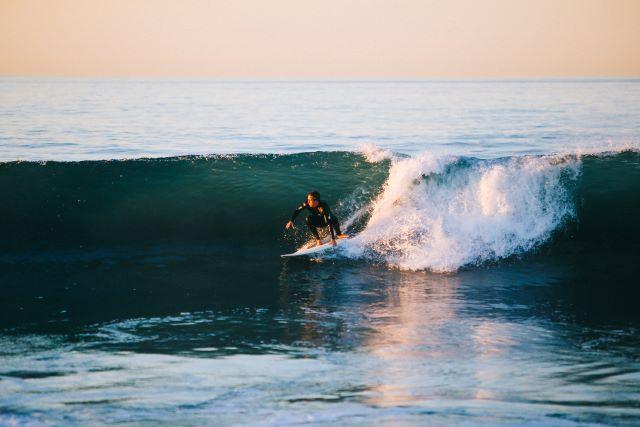
Whether you’re a seasoned surfer seeking the ultimate challenge or a beginner eager to catch your very first wave, Hawaii offers an array of surf spots that cater to every skill level. Join us as we embark on a journey through the ultimate guide to surfing in Hawaii, uncovering where to catch the best waves and immersing ourselves in the rich surf culture that has made these islands a mecca for wave riders from across the globe.
Surfs up!
Surfs up! Hawaii’s surf scene is as diverse as its stunning landscapes, offering an array of breaks and waves to suit surfers of all backgrounds and abilities. From the legendary big-wave breaks of Oahu’s North Shore to the gentle rollers of Waikiki Beach, there’s a perfect wave waiting for you.
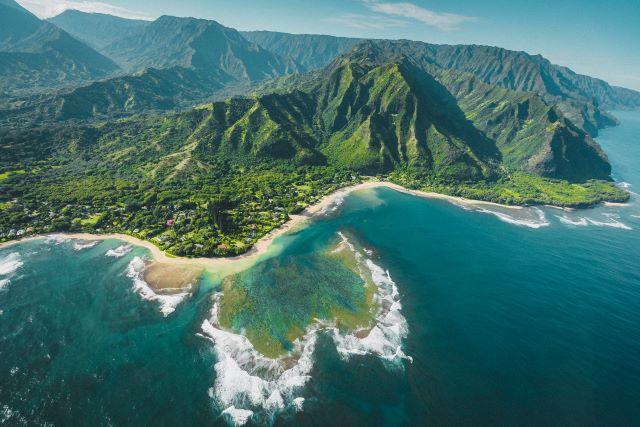
But surfing in Hawaii is more than just catching waves; it’s a way of life, deeply woven into the cultural fabric of the islands. Whether you’re seeking epic swells or a deeper connection with the Aloha spirit, this guide will navigate you through the surfers’ paradise that is Hawaii, helping you discover the best waves and experiences the islands have to offer.
Surfing Etiquette in Hawaii
Surfing in Hawaii comes with its own unique set of customs and etiquette that every surfer should be aware of. The “Aloha spirit” isn’t just a catchphrase here; it’s a way of life. Respecting the local culture and your fellow surfers is paramount. Always remember to share the waves, wait your turn, and give a friendly “Aloha” to your fellow surfers in the lineup.
Keep in mind that some surf breaks have a pecking order based on experience, so be courteous and patient as you earn your place.
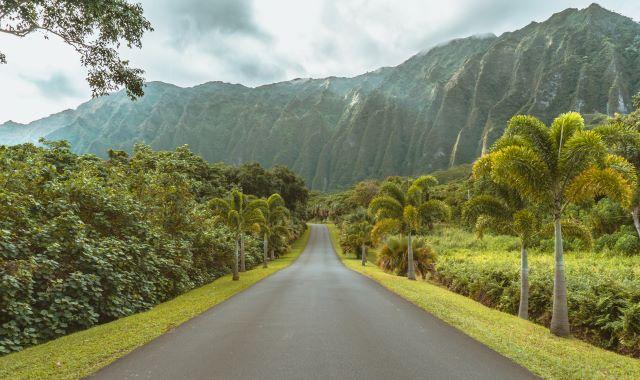
Hawaii’s surf spots often hold deep cultural significance to the islands’ native population, so be sure to respect any local guidelines or traditions. Additionally, environmental stewardship is essential; pick up after yourself and do your part to keep Hawaii’s beautiful beaches and waters clean.
Now, let’s dive into the specifics of where you can catch some of the best waves in Hawaii.
Respecting local surfers and the ocean environment
Respecting local surfers and the ocean environment is fundamental when surfing in Hawaii. The islands have a rich surf culture, and it’s essential to show respect to the local surfers who have been riding these waves for generations. Here are some key points to keep in mind:
- Observe and Learn: Spend some time watching the waves and understanding the lineup before paddling out. Different breaks have their own unwritten rules and pecking orders.
- Wait Your Turn: Don’t drop in on someone else’s wave. Wait your turn, and respect the surfer who’s closest to the peak. Hawaiian surfers often prioritize the person who has been waiting the longest.
- Mind the Locals: If you’re new to a break, show respect to the locals. Some spots are known for their tight-knit surf communities, and it’s crucial to earn your place in the lineup.
- Leave No Trace: Keep Hawaii’s beaches and waters pristine. Pick up after yourself, and don’t litter. Participate in beach cleanup initiatives when possible.
- Understand Local Traditions: Some surf spots in Hawaii are culturally significant to native Hawaiians. Learn about the history and traditions associated with these places, and show reverence when appropriate.
- Be Mindful of Wildlife: Hawaii’s waters are home to a variety of marine life. Give sea turtles, dolphins, and other creatures their space. Avoid disturbing or harassing them.
- Stay Safe: Hawaii’s waves can be powerful and challenging. Know your limits, and always put safety first. If you’re unsure about conditions or your abilities, seek advice from experienced locals or consider taking surf lessons.
Remember that the spirit of “Aloha” goes a long way in Hawaii. Treat others with kindness and respect, and you’ll have a more enjoyable and meaningful surfing experience in the Aloha State.
Best 10 Surf Spots in Hawaii
Pipeline, Oahu
Surfing at Pipeline on Oahu’s North Shore is a renowned experience for advanced and expert surfers seeking thrilling waves. This famous surf spot is known for its powerful and barreling waves, with the left reef break, “Pipeline,” and the right reef break, “Backdoor,” offering intense rides.
The best time to tackle Pipeline is during the winter months, from November to February, when large North Pacific swells create epic conditions, often hosting prestigious surf competitions. Yet, Pipeline’s waves demand caution, given their speed, power, and shallow reef.
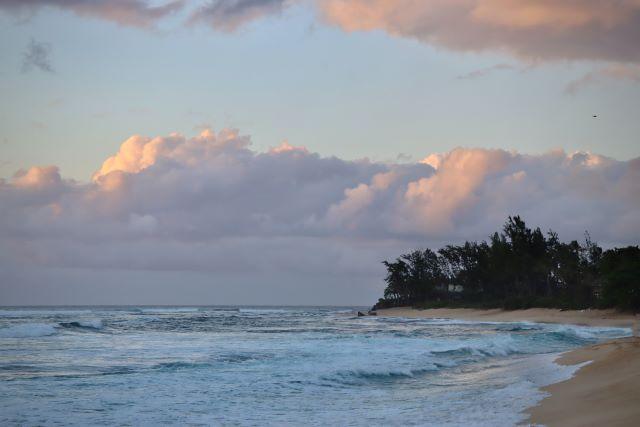
The lineup can get crowded, and it’s crucial to respect the local surfers’ expertise and priority. Surfing at Pipeline is a bucket-list adventure, where respect for the ocean and the local surf community is paramount.
Honolua Bay, Maui
Honolua Bay on Maui is a picturesque surf spot cherished for its pristine beauty and exceptional waves. Surrounded by lush greenery and crystal-clear waters, Honolua Bay offers some of the best waves on the island. This reef break is ideal for experienced surfers, especially during the winter months when the swells are most consistent.
The waves here can range from head-high to double overhead, providing thrilling rides. When surfing at Honolua Bay, it’s essential to be mindful of the reef and respect the local surfers who frequent this spot. The serene and unspoiled surroundings make Honolua Bay a must-visit destination for surfers looking to connect with nature while riding remarkable waves.
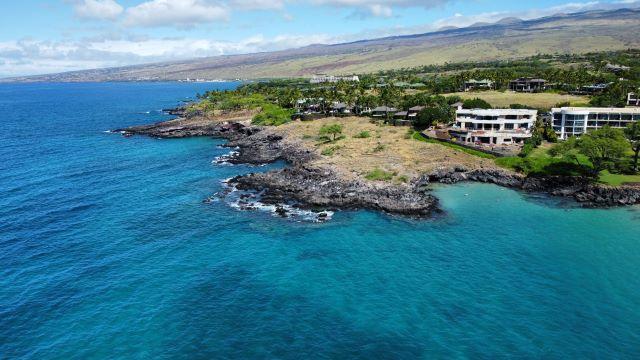
Kiahuna Beach, Kauai
Kiahuna Beach in Kauai is a fantastic surf spot for both beginners and intermediate surfers. Located on the sunny south shore of Kauai, it boasts consistent waves and a welcoming atmosphere. The beach break here produces gentle, rolling waves, making it an excellent place to learn how to surf or improve your skills.
Surrounded by stunning tropical scenery, Kiahuna Beach offers a unique surfing experience. The waves are typically smaller, making it suitable for riders of all levels. With its sandy bottom and warm waters, this spot is perfect for long, relaxing sessions in the sun.
Whether you’re a novice looking to catch your first wave or a seasoned surfer seeking a laid-back ride, Kiahuna Beach is a delightful destination for a day of surfing in Hawaii.
Waikiki Beach, Oahu
Waikiki Beach on the island of Oahu is one of the most iconic and renowned surf spots in Hawaii. It’s a perfect destination for surfers of all levels, from beginners to advanced riders. The gentle, rolling waves breaking over a sandy bottom make it an ideal place for newcomers to catch their first waves.
If you’re a more experienced surfer, you can ride the larger, more challenging waves that form farther from the shore.
Apart from the excellent surf, Waikiki Beach offers stunning views of Diamond Head, a volcanic crater, and the city skyline of Honolulu. It’s a lively and vibrant area with plenty of amenities, making it easy to access surfboard rentals and lessons if needed. After a day on the waves, you can explore the nearby shops, restaurants, and vibrant nightlife.
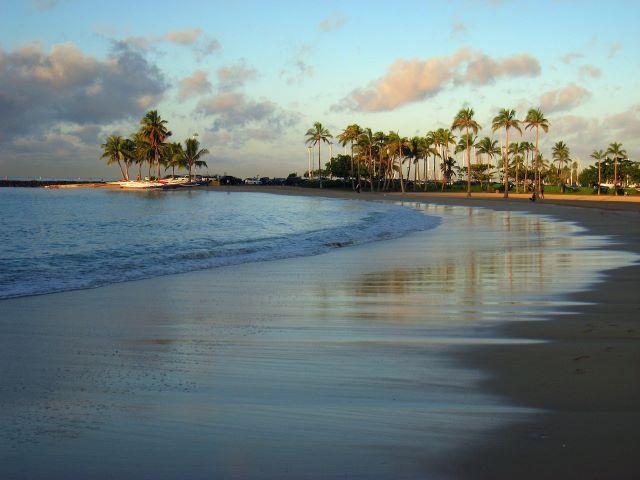
With its combination of surf, scenery, and vibrant atmosphere, Waikiki Beach is a must-visit surf spot in Hawaii.
Honolii Beach Park, The Big Island
Honolii Beach Park, located on the Big Island of Hawaii, is a hidden gem for surfers seeking a less crowded and more laid-back surfing experience. This picturesque surf spot offers consistent waves that are particularly well-suited for longboarding and intermediate surfers. The waves here are often gentle and forgiving, making it a great place to improve your skills or enjoy a relaxing day of surfing.
One of the unique features of Honolii Beach Park is its lush, tropical surroundings. Surrounded by dense vegetation and with a river mouth nearby, the park offers a beautiful natural setting. It’s not uncommon to spot sea turtles or dolphins in the water while you’re out catching waves.
While Honolii is less developed than some other surf spots in Hawaii, it provides a quintessential Hawaiian experience with its serene atmosphere and friendly local surf community. If you’re looking for a tranquil surf destination with a touch of Hawaiian authenticity, Honolii Beach Park is a fantastic choice.
Poipu Beach, Kauai
Poipu Beach on the island of Kauai is a premier surf spot known for its consistent waves and stunning natural beauty. This south shore gem offers a variety of breaks suitable for surfers of all levels, from beginners to advanced riders. The beach is particularly famous for its long rides and gentle waves, making it an excellent spot for learners looking to catch their first waves.
One of the standout features of Poipu Beach is its picturesque surroundings. The beach is framed by swaying palm trees, and you’ll often spot Hawaiian monk seals or sea turtles basking in the sun. The crystal-clear waters provide excellent visibility for spotting marine life while you’re waiting for your next set.
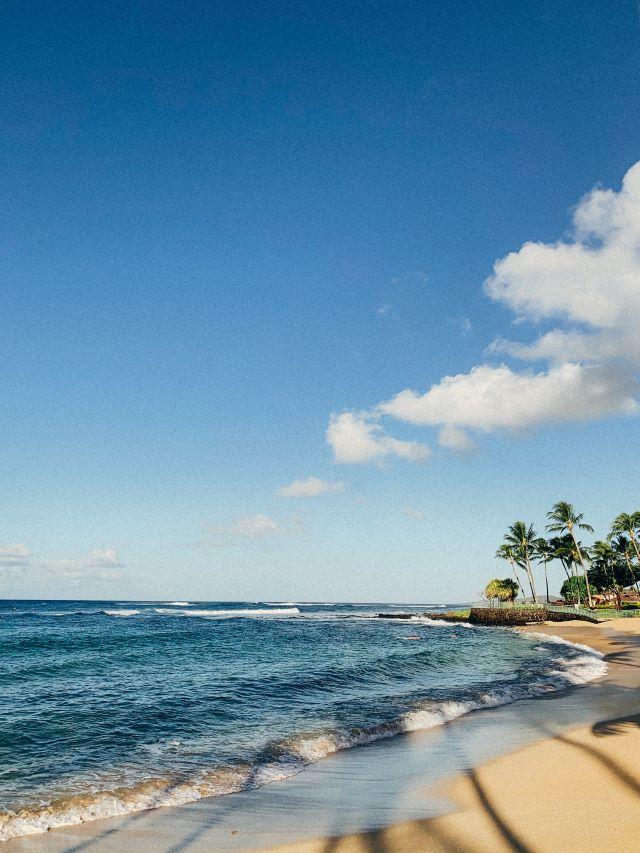
The surf scene at Poipu is vibrant and welcoming, with plenty of local surf schools and rental shops offering lessons and equipment. Whether you’re a seasoned surfer or a first-timer, Poipu Beach offers a fantastic Hawaiian surfing experience in a breathtaking setting.
Kihei Cove, Maui
Kihei Cove, located on the sunny shores of Maui, is a hidden gem for surfers seeking consistently fun waves and a laid-back atmosphere. This surf spot is perfect for both beginners and experienced surfers, making it a popular destination for those looking to ride the waves in paradise.
The waves at Kihei Cove are relatively small and manageable, ideal for those who are still learning the ropes or simply want to enjoy a relaxed surfing experience. The sandy bottom and mellow breaks make it a safe and inviting spot for newcomers to the sport.
What sets Kihei Cove apart is its friendly and welcoming surf community. The local surfers are known for their hospitality, and you’ll often find them sharing waves and offering tips to visitors. The cove has a relaxed vibe that captures the essence of the Hawaiian surf culture.
If you’re looking to catch some waves on Maui without the crowds and intensity of other spots, Kihei Cove is a fantastic choice. Plus, the stunning sunsets over the Pacific Ocean add an extra touch of magic to your surfing sessions.
Sunset Beach, Oahu
Sunset Beach on Oahu’s North Shore is renowned for its powerful and challenging waves. It hosts prestigious surfing competitions like the Vans Triple Crown of Surfing and attracts expert surfers worldwide. With waves reaching over 30 feet during peak swells, it’s not suitable for beginners.
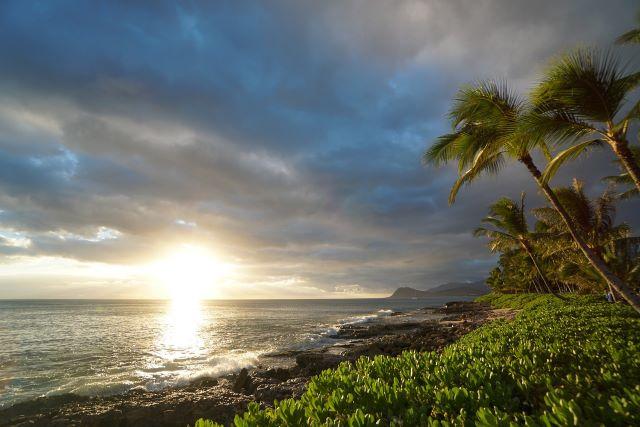
Experienced surfers flock here during the winter months when waves are most significant. However, during summer, it offers a calmer beach experience for swimming and sunbathing. Respect the local surf culture, give right-of-way to locals, and observe surf etiquette, especially during large swells. Witnessing the pros ride these epic waves and enjoying the breathtaking sunsets is a memorable experience.
Hanalei Bay, Kauai
Hanalei Bay in Kauai offers a picturesque setting for surfers. It’s a beautiful crescent-shaped beach with stunning mountain backdrops. The bay provides excellent conditions for surfers of all levels. During winter, it attracts larger swells, making it ideal for experienced surfers. In contrast, summer offers calmer waters suitable for beginners and family outings. The gentle waves make it perfect for longboarding and learning to surf.
Hanalei Bay has surf schools and rentals for those looking to catch their first waves. Remember to be respectful of the local surfers and follow surf etiquette to ensure a pleasant experience for everyone.
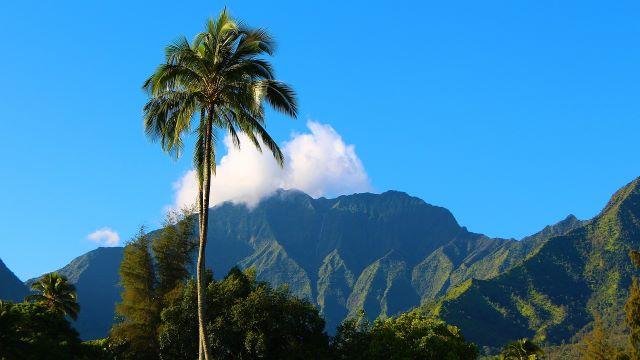
Jaws (Peahi), Maui
Jaws, also known as Peahi, is a legendary big wave surf spot on Maui. It’s not for the faint-hearted, as it features some of the most massive waves in the world, particularly during the winter months. The waves at Jaws can reach heights of up to 60 feet or more, attracting professional big wave surfers from around the globe.
This spot is famous for its awe-inspiring waves and challenging conditions, making it a bucket-list destination for surfers seeking an adrenaline rush. However, due to its extreme nature, Jaws is not recommended for beginners. Surfing here requires a high level of skill, experience, and courage. If you’re not an experienced big wave surfer, it’s best to admire the action from the shore and leave Jaws to the pros.
Surf Schools and Lessons
If you’re new to surfing or looking to improve your skills, Hawaii offers numerous surf schools and lessons. These schools cater to all levels, from beginners to advanced surfers. They provide expert instruction, safety guidance, and equipment rental, making it accessible for everyone to catch some waves.
Whether you want to ride your first wave or refine your technique, enrolling in a surf lesson can enhance your surfing experience in Hawaii. Many surf schools operate on various islands, so you can find one that suits your location and skill level.
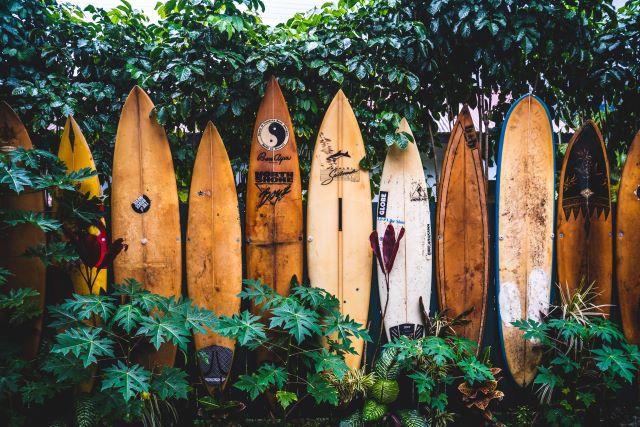
Additionally, these schools often incorporate valuable insights into local surf etiquette and ocean safety, ensuring you have a safe and enjoyable time in the water.
Learning to ride the waves safely and confidently
Learning to ride the waves safely and confidently is essential for a rewarding surfing experience in Hawaii. Many surf schools and instructors across the islands offer lessons that cater to various skill levels, including beginners and intermediate surfers. These lessons typically cover fundamental techniques, ocean awareness, and safety protocols.
By taking lessons, you not only improve your surfing skills but also gain insights into the local surf culture and etiquette. Additionally, instructors will provide guidance on choosing suitable surf spots based on your proficiency level, ensuring you have a memorable and safe time in the Hawaiian waves.
Safety Tips for Surfers
Safety should always be a top priority when surfing in Hawaii. Here are some essential safety tips to keep in mind:
- Know Your Limits: Understand your skill level and don’t attempt to surf waves that are beyond your abilities.
- Respect Local Guidelines: Familiarize yourself with specific surf spot rules and adhere to them. Some spots may have local regulations or preferences.
- Buddy System: Surf with a friend or in areas with other surfers. In case of an emergency, having someone there can be a lifesaver.
- Use the Right Gear: Ensure your surfboard and equipment are in good condition. Wear a leash to prevent your board from drifting away.
- Stay Hydrated: The Hawaiian sun can be intense, so stay hydrated by drinking plenty of water throughout your session.
- Be Ocean Aware: Pay attention to tides, currents, and wave conditions. Rip currents can be hazardous, so learn how to identify and navigate them.
- Respect Wildlife: Hawaii’s oceans are home to various marine life. Be mindful of creatures like sea turtles and dolphins, and maintain a respectful distance.
- Know Emergency Contacts: Have information about local emergency services and surf rescue teams readily available.
- Sun Protection: Apply sunscreen generously to protect your skin from sunburn.
- Observe Surf Etiquette: Be courteous in the water, wait your turn for waves, and avoid dropping in on others.
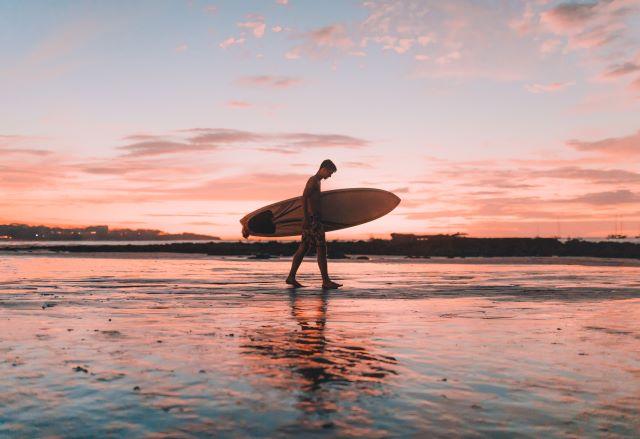
By following these safety tips and respecting both the ocean and your fellow surfers, you can enjoy a thrilling and secure surfing experience in Hawaii.
Understanding currents, reef hazards, and wildlife
Understanding the unique aquatic environment in Hawaii is crucial for a safe and enjoyable surfing experience. Here’s what you should know:
1. Ocean Currents: Hawaii experiences a variety of ocean currents, including strong rip currents. These currents can be challenging, so it’s essential to learn how to identify them and how to escape if caught in one. Staying informed about local currents and conditions is vital.
2. Reef Hazards: Many surf breaks in Hawaii are over coral reefs. Surfing over reefs presents potential risks like getting caught on sharp coral or rocks. Pay attention to tide levels and water depth to avoid hitting the reef. Reef booties can provide protection.
3. Marine Life: Hawaii’s waters are teeming with marine life, from sea turtles and dolphins to various species of fish. While encounters with these creatures can be incredible, it’s essential to respect their space and not disturb them. Sea turtles, for example, are protected by law, and touching or harassing them is illegal.
4. Sharks: Hawaii is home to a variety of shark species, including tiger sharks. While shark encounters are rare, it’s a good practice to avoid murky water, especially near stream mouths, as they can attract sharks. Be cautious but not overly fearful.
5. Jellyfish and Portuguese Man o’ Wars: Some areas of Hawaii may experience jellyfish and Portuguese Man o’ War influxes during certain seasons. These creatures can deliver painful stings. Be cautious when swimming or surfing during jellyfish season, and consider wearing a protective wetsuit.
6. Sea Conditions: Always check surf reports and forecasts before heading out. Hawaii’s wave and weather conditions can change rapidly, and it’s essential to be prepared for the surf conditions you’ll encounter.
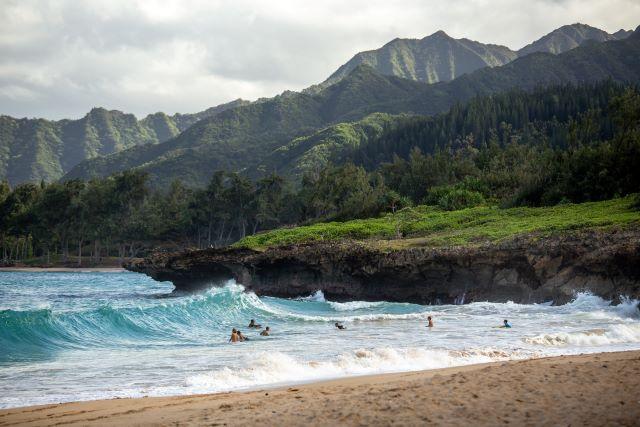
By understanding and respecting these factors, surfers can enhance their safety and ensure a harmonious relationship with Hawaii’s ocean environment. Additionally, consider taking lessons from local surf schools, as they often provide valuable insights into local conditions and hazards.
Other Water Activities in Hawaii
Here are some other water activities you can enjoy in Hawaii:
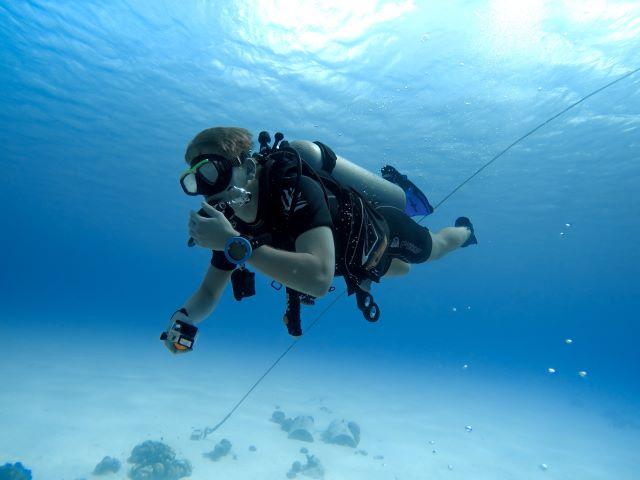
- Snorkeling: Hawaii boasts some of the world’s best snorkeling spots. Explore colorful coral reefs and swim alongside tropical fish and marine life. Hanauma Bay on Oahu and Molokini Crater near Maui are popular snorkeling destinations.
- Scuba Diving: If you’re a certified diver, Hawaii offers fantastic scuba diving opportunities. Dive deep into underwater caves, explore sunken shipwrecks, and encounter diverse marine species. Sites like the Cathedrals in Lanai and the Corsair wreck in Oahu are renowned.
- Stand-Up Paddleboarding (SUP): Try stand-up paddleboarding in Hawaii’s calm waters. It’s an excellent way to explore the coastline, spot marine life, and enjoy a full-body workout. SUP is popular in places like Waikiki Beach.
- Kayaking: Kayak through Hawaii’s serene rivers, lush valleys, or along the coastline. You can choose from various kayaking experiences, including sea kayaking and river kayaking. Wailua River on Kauai and Kealakekua Bay on the Big Island are popular kayak destinations.
- Parasailing: Get a bird’s-eye view of Hawaii’s breathtaking landscapes by parasailing. You’ll be harnessed to a parachute and towed behind a boat, offering stunning panoramic views of the islands from above.
- Jet Skiing: If you’re looking for an adrenaline rush, rent a jet ski and zip across the clear waters of Hawaii. Many beaches and resorts offer jet ski rentals for an exciting aquatic adventure.
- Swimming with Dolphins: Take a guided tour to swim with dolphins in their natural habitat. Hawaii is home to several species of dolphins, and encountering these intelligent creatures is a memorable experience.
- Whale Watching: During the winter months, Hawaii becomes a prime location for whale watching. Humpback whales migrate to the warm Hawaiian waters, and you can join boat tours to witness their impressive displays.
- Fishing: Hawaii offers excellent opportunities for sport fishing. Charter a boat and try your luck at catching game fish like marlin, tuna, and mahi-mahi. The waters around Kona on the Big Island are known for their rich fishing grounds.
- Submarine Tours: Explore the depths of the ocean without getting wet by taking a submarine tour. You can descend to the underwater world and observe marine life and coral formations up close.
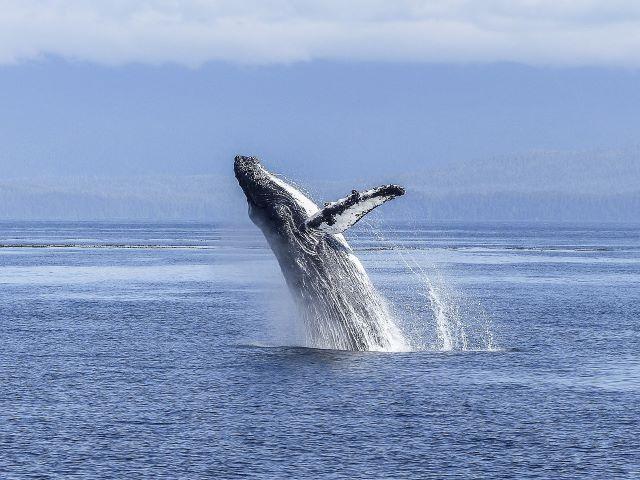
These water activities provide exciting ways to immerse yourself in Hawaii’s stunning natural beauty and aquatic wonders. Whether you’re seeking adventure or a relaxing experience, Hawaii has something for everyone.
Embrace the spirit of Aloha!
Embracing the spirit of Aloha is not only a cultural practice but also a transformative experience when exploring the beautiful islands of Hawaii. By respecting the land and sea, learning about the culture, practicing sustainability, respecting local customs, giving back to the community, savoring local cuisine, and learning some basic Hawaiian phrases, you’ll not only enjoy your visit to Hawaii but also become a part of the island’s rich tapestry.
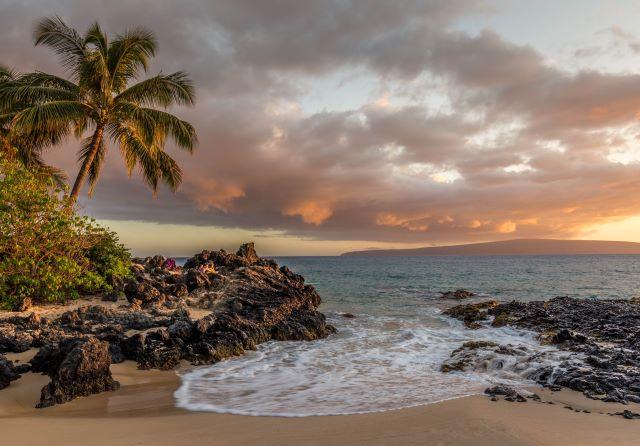
So, as you embark on your Hawaiian adventure, remember to embrace the spirit of Aloha and leave the islands with cherished memories and a deeper connection to this unique paradise.
FAQs:
Do I need to be an experienced surfer to surf in Hawaii?
Hawaii offers surf spots for all skill levels, but some of the famous breaks are best suited for experienced surfers. If you’re a beginner, it’s advisable to take lessons and start at beginner-friendly beaches before attempting challenging waves.
What type of surfboard should I bring or rent?
The type of surfboard you should use depends on your skill level and the specific surf spot. Beginners often start with longboards, while more advanced surfers may prefer shortboards. Renting boards is common and convenient in Hawaii.
Are there any specific rules or regulations for surfing in Hawaii?
Yes, Hawaii has a set of surf etiquette rules to ensure safety and respect among surfers. These include right of way, not dropping in on someone else’s wave, and being mindful of local surfers.
Can I surf all year round in Hawaii?
Hawaii enjoys consistent surf throughout the year, but the quality and size of waves vary by season and location. Some seasons are better for certain surf spots, so it’s advisable to research the ideal time for your skill level and the waves you want to ride.
Are there surf breaks suitable for beginners in Hawaii?
Yes, there are surf breaks in Hawaii that cater to beginners. Waikiki Beach on Oahu, for example, is known for its gentle, rolling waves, making it a popular spot for novice surfers. Many surf schools offer lessons to help beginners get started safely.






